Aspex Gallery in Gunwharf Quays celebrates 40 years of bringing art to everyone
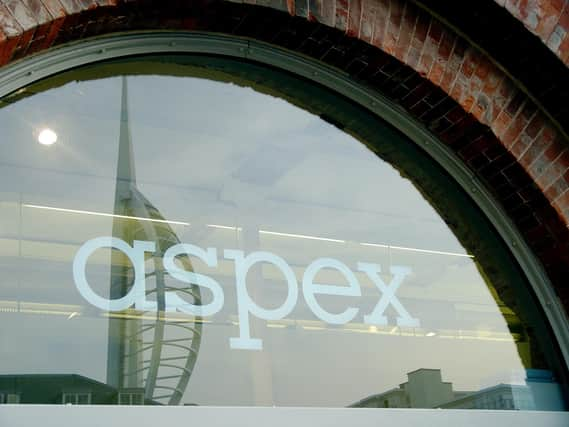

The recent graduates from Portsmouth Polytechnic, wanted to stay in the city and had branded themselves as Art Space Portsmouth (Asp).
They soon came across an abandoned church in Brougham Road, Somers Town.
Advertisement
Hide AdAdvertisement
Hide AdLes Buckingham recalls: ‘When they first saw that building it was almost wrecked. A quarter of the roof was missing, kids had used it as a knocking-shop and all sorts of things.
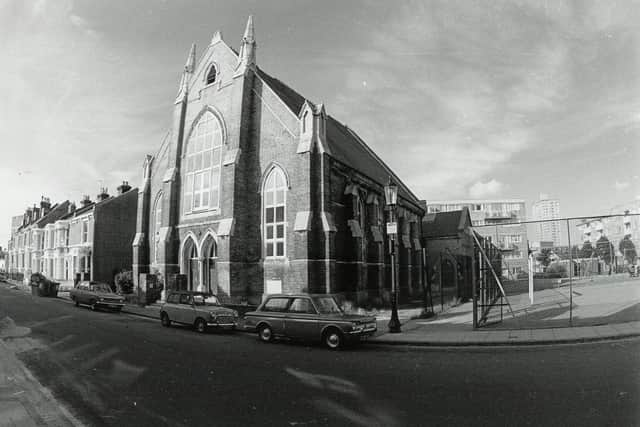

‘And before that it was also used by the university for their building courses, so there were all these things in there that were almost too well made to knock down!
‘They found out who owned it, and they were incredibly lucky – it was the county council.
‘So when these scruffy artists walked into his office – it's amazing they even got to his office – and said we'd like to have Brougham Road, he said: “That's interesting. We'll completely do the roof, we'll give you a grant straight away and we'll give you six months free rent to get the studio sorted.”’
Advertisement
Hide AdAdvertisement
Hide AdThe first Asp exhibition (hence Aspex) was in June 1981 – Rachel Fenner’s Sculpture & Drawings 1973-1980, and so a new gallery was born.
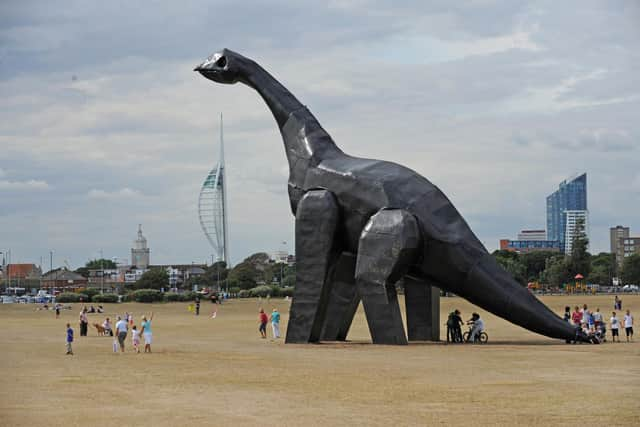

In 2006 they moved to new premises – the Vulcan Building in Gunwharf Quays, where they remain today.
But Les was Aspex’s first director, starting there in 1984.
‘The first two or three years were artist-led,’ he explains. ‘But they wanted a gallery and they wanted to show artists from abroad and the rest of England – cutting edge artists to inspire them.
‘After they'd done a bit of that, they then said, right, we need to get back into the studio and we need someone to run it, and that’s where I came in.’
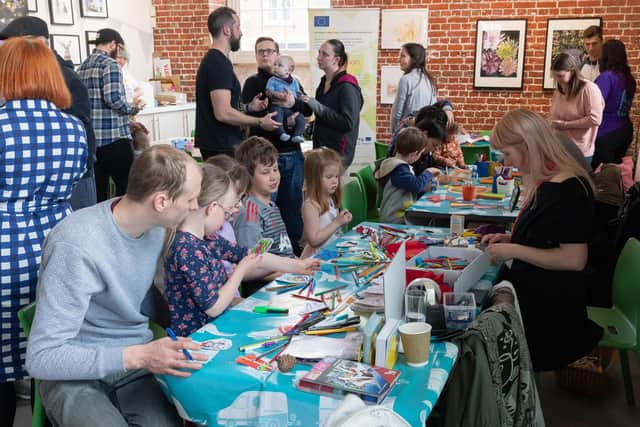

Advertisement
Hide AdAdvertisement
Hide AdLes left in 1999 and was replaced by Jo Bushnell, who will be overseeing the gallery's 40th anniversary celebrations.
Jo says: ‘Even in this difficult time, it's lovely to have something to celebrate, and to look back at the legacy of the last four decades and the amazing work that's been done – but also to look forward to what we are going to do in the next year and into the future, and how to ensure that Portsmouth remains a vibrant centre for contemporary visual arts.’
Previous big anniversaries have also been marked with special celebrations.
‘For the 25th anniversary we closed the gallery down on April 1, 2006, had a big cake, and reopened at the Vulcan Building on December 1 that year,’ says Jo.
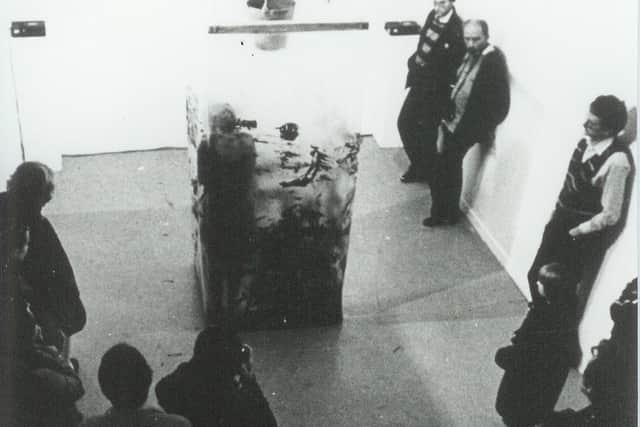

Advertisement
Hide AdAdvertisement
Hide Ad‘The 30th anniversary, 2011, was a hard, hard time for us. It was austerity, there were massive arts funding cuts, so we had an austerity carnival, and made all of the decorations with recycled newspaper – it was a very difficult, but very positive and creative time.’
The next anniversary saw them reconnect with their roots.
‘For the 35th we had an auction, 35 And Counting. We went back to some of the artists we'd worked with and asked them if they could donate works as part of a fundraising initiative to develop an artist residency again with the space. Having come from an artist-led institution, and then moving away from that, we then re-established an artist's studio within the space.’
So this year, they aren't letting the pandemic stopping them from celebrating 40 years – and they have exciting plans (see below).
Throughout the four decades, education has been a key part of the Aspex ethos.
Advertisement
Hide AdAdvertisement
Hide Ad‘It's incredibly important,’ says Les, ‘we're losing that creativity in schools, especially art and music. Many, many people have said get the arts back in schools, so we see ourselves as sort of the last bastion of where this happens, and going out to schools and having them come in to us...’
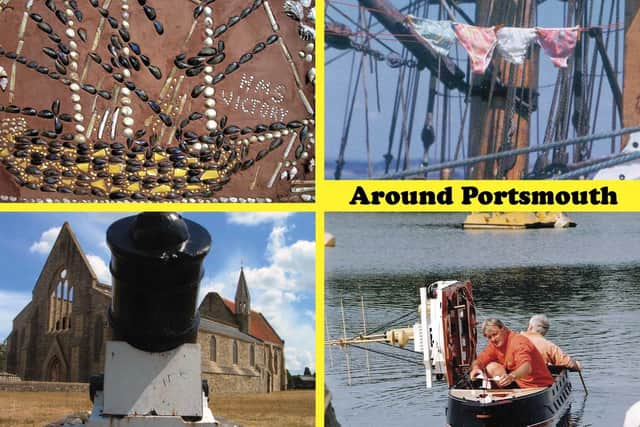

Jo expands on the theme: ‘It was important to me when I took over from Les, and for Les when he took over from the artists, that the foundation stones of Aspex have remained constant for those 40 years.
‘It's always been about supporting emerging artists and innovative practice – it's always been about revealing the creative process.
‘There are people of all ages, right through from toddlers to older people, and encouraging them to be creative themselves, and that hasn't changed.
Advertisement
Hide AdAdvertisement
Hide Ad‘While we've changed shape, from the backstreets of Somers Town to Gunwharf Quays, in terms of the core of what the organisation is about, our mission and our vision has been constant, and I think that's quite special.’
Since 2003, Aspex has held Emergency, a competition for emerging artists every two years.
‘We've often talked about artists starting at Aspex, and we don't necessarily mean at that early point, just post-graduation, but really right as kids.‘I recently got a message from Clark Reynolds, and I feel he’s a really interesting developing artist. He's gone through this incredibly difficult situation of losing his sight, and yet is using it to spur on his creativity.
‘It's very exciting to see him grow and develop. He said Aspex was the first gallery he ever visited and he loved coming as a child, and he feels that's what's made him an artist.’
Advertisement
Hide AdAdvertisement
Hide AdAnother key part of the gallery's work is to allow debates about important issues to take place.
‘I also think we have a really important role to play socially within society about the kinds of issues and themes that artists pick on and describe and create debate about within their work.
‘When I look at our back catalogue, it is diverse. The artists we have shown have come from all over the world, we've always been really multicultural in our perspective, we've always been an advocate for disabled artists.
‘These themes which are now being discussed in wider society - how do we make our society fairer, we've been doing that all the way through.
Advertisement
Hide AdAdvertisement
Hide Ad‘Visual art is especially good at this, giving people a way into the discussion and the debate around what's important in life
‘It's support for the artist, it's encouraging creativity in the wider community, but it's also that we aren't an island, we're part of society and we contribute to the debates in society.’
It remind Les of the time renowned performance artist Stuart Brisley brought The Cenotaph Project to Aspex in 1988.
‘The Cenotaph was never finished, it was missing about three foot off the top of it,’ explains Les, ‘so he built these monoliths, and told the story about them.
Advertisement
Hide AdAdvertisement
Hide Ad‘We had a day, and I was completely overwhelmed, about why the monument is there, who we should remember, what it was all about, in Portsmouth – which is obviously the home of the navy.
‘We invited people to come and we were astonished, it was absolutely full, and half of the people were ex-servicemen, many wearing their medals. And they said: “We never want war again”, “We never want to build more monuments which we go to every year”.
‘I was sitting there thinking: “Crikey!” I didn't know that came from within the armed forces community.
‘I've always thought of Portsmouth as a bit gung-ho when it comes to these things, but there they were, willing to talk to everyone about the fact that they never want that again.’
Advertisement
Hide AdAdvertisement
Hide AdJo adds: ‘That's what artists do – they see the gaps and they fill them. This is why Les and I do what we do, it's a joy to work with people who see things differently, operate differently, and explore these questions which have real meaning in society.’
Another example came from Aspex's second ever exhibition in 1982, Reflections.
As part of it, then little-known Palestinian artist Mona Hatoum erected a see-through cubicle, which she filled with red mud. She was naked inside it, clawing to get out.
This duly appeared on the front of The News in scandalised tones, headlined ‘Naked in red slime.’Hatoum has gone on to international acclaim and fame.
Advertisement
Hide AdAdvertisement
Hide AdLes Buckingham says: ‘Nobody asked the question in the paper, until the letters came in, why was this red? And the reason was that the Palestinian soil was red – and she was Palestinian.
‘All the people who watched the performance were informed of this and they loved it. All the people who then saw it on the front of The News, weren’t.
‘It wasn’t your greatest hour, but it was a great headline,’ Les laughs, ‘then the debate started. It was about the freedom of the Palestinian people, and it's still going on 40 years later.’
But of course, the gallery aims to bring something for everyone.
Advertisement
Hide AdAdvertisement
Hide AdAs Jo says: ‘We work very hard to make it welcoming, to give people a way in, to make them feel it is for them.
‘And contemporary visual art is for them. Myself and the whole team are really passionate about giving people access to contemporary visual art because it has been our lives, and we want to share it.’
The gallery is currently closed, but when coronavirus restrictions lift, it will reopen with In Search of Chemozoa by boredomresearch, presenting ideas for an alternative cultural understanding of cancer.
For more information go to aspex.org.uk.
How Aspex will be marking its 40th anniversary
Life Begins at 40 is a mantra Aspex Gallery is taking to heart – it’s the title given to their ruby anniversary celebrations.
Advertisement
Hide AdAdvertisement
Hide AdWith gallery director Jo Bushnell admitting ‘a big party's not happening any time soon’ they will be marking the year in a variety of ways.
Next week they launch a series of 40 stories, publishing one a week on their website and through social media.
‘They’re short personal stories giving a bit of a background to parts of our history which Les and I fear, if we don't write it down now, it will be lost.
‘We want to start getting this history out there and putting it back in the public realm.’
Advertisement
Hide AdAdvertisement
Hide AdThe gallery has won an Arts Council grant for the project which will enable them to commission four new works – one representing each decade.
‘We're thrilled. These commissions are going to be online, so they'll be work that can be enjoyed safely. And that's about putting money out in the art community.
‘They've also given us the rest of the money we need to realise the Luna Park project.’
Last year marked 10 years since the 16m dinosaur, Luna Park, burnt down on Southsea Common in an electrical fire. Aspex had helped bring the dinosaur to Southsea, and while it was due to go off on tour after it’s time in Southsea, there had been talk of making Southsea its permanent home.
Advertisement
Hide AdAdvertisement
Hide AdAspex and original artists Heather and Ivan Morison launched a fundraiser for a permanent tribute.
‘That will be a bronze sculpture of Luna Park, with an augmented reality version, you'll be able to take your device down to Southsea Common and see it in situ.
‘It's going to be very important because lots people put their hands in their pockets to help fund that, so it's going to be owned by the people of Portsmouth.
Jo hopes that will be launched on July 31, ‘hopefully with a real-life party!’
Advertisement
Hide AdAdvertisement
Hide AdThe Art Council funding will also enable them to create a new programme of work with schools, ‘aiming to kickstart creativity in the school curriculum,’ adds Jo, ‘and a local community project – a young curator's project for young people in Portsea.’
Comment Guidelines
National World encourages reader discussion on our stories. User feedback, insights and back-and-forth exchanges add a rich layer of context to reporting. Please review our Community Guidelines before commenting.